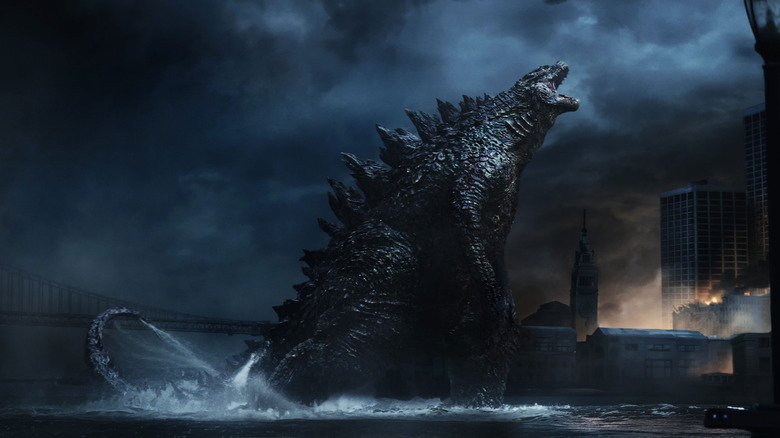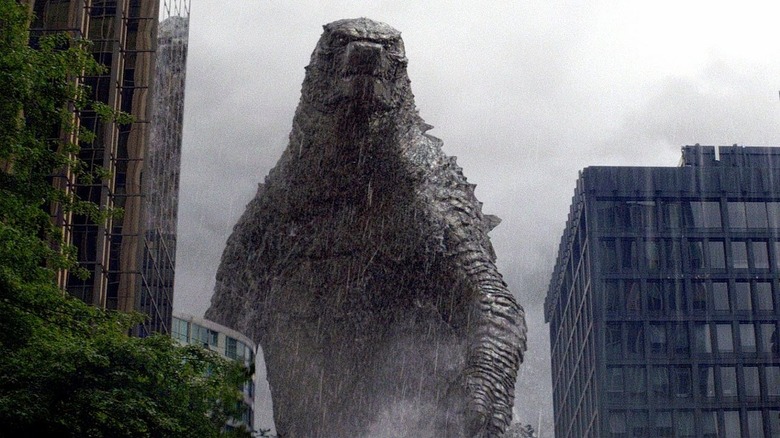The Original Roar Of Gareth Edwards' Godzilla Was Inaudible To The Human Ear
There are few things as recognizable in pop culture than Godzilla. Case in point, even divorced from the legendary kaiju and his instantly identifiable, the King of the Monsters' roar is something one knows the second they hear it. Yes, the roar has changed a bit over the years, but the franchise has largely stayed true to what we got in 1954's seminal classic "Godzilla," which utilized a leather glove across the strings of a contrabass to create the roar we all know. When the franchise was rebooted by director Gareth Edwards for American audiences in 2014, the sound team took a different approach.
In a 2014 interview with Entertainment Weekly, sound designers Erik Aadahl and Ethan Van der Ryn explained how they crafted a new roar for 2014's "Godzilla." The duo spent six months in total over a three-year period trying to find the perfect combination of sounds. Ultimately, they used new technology such as state of the art microphones that record sounds above the range of human hearing. So yes, technically inaudible sounds were used to create the very loud roar of a giant monster. As Van der Ryn explained:
"We recorded these [inaudible] sounds and then we would bring them back into the studio and slow them down, pitch them down, and bring them into the range of human hearing. That was really an exciting thing for us because it allowed us to exploit this vast power of unexplored sounds."
"As we were working on the roar we kind of broke it down into two parts: the initial shriek and the finishing bellow," Aadahl added. "To me, both parts have different emotional reactions: The initial is the fury of nature and the finish is this knowing, this understanding that conveys a deeper, richer soul. And ultimately, when you give voice to something, you are giving it its soul. So, we've become very protective over our big beast because of that."
The responsibility of taking on Godzilla's roar
The roar, as a whole, was a process of trial and error. The team tried using animal sounds and even the glove tricks that made the original roar. None of them felt right. In the end, they blended these originally inaudible sounds alongside scraped drumheads and creaky doors to make Godzilla's new roar. The end result was both fresh yet true to what fans knew from prior incarnations of the franchise.
The trial and error process included several failed experiments, such as pulling the squeaky legs of an ironing board and opening rusty car doors. The duo didn't even tell Edwards how they pulled it off until after the film was finished, likening it to a magician not revealing how they do a trick. Aadahl, in the same interview, spoke to the gravity of taking the assignment on.
"It's kind of a part of our culture — Godzilla and his roar. It's one of those sounds where you can go anywhere in the world and everybody knows what it is. It comes with a lot of responsibility to redesign it. Our starting point really was wanting to embrace the original and pay homage to it."
In the end, it was a big success. Though divisive, "Godzilla" was a big hit at the box office, taking in $529 million worldwide. More than just a one-off, the film birthed the MonsterVerse, which has since become a $2.4 billion franchise that is still going strong, with "Godzilla x Kong: The New Empire" hitting theaters earlier this year. Long live the king, as it were.

